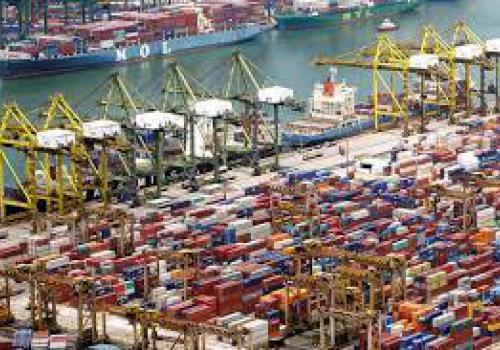Sri Lanka’s imports grew to 1,592 million US dollars in January 2021 as credit and economic activities recovered the highest since a Coronavirus hit reduced tourism incomes from around February 2020, official data showed. Sri Lanka’s imports were up from 1,527 million US dollars in January, but were down 1.73 billion dollars are year earlier, central bank data showed. Sri Lanka’s imports are still down from around 1.7 to 1.8 billion US dollars seen before the Coronavirus pandemic where there were strong tourism receipts though exports are fairly stable and remittances are higher. Imports in Sri Lanka are driven residents spending incomes they get from exports, remittances, tourism receipts and foreign borrowings usually by the government.
As private recipients of foreign revenues usually save, imports at the margin are driven by the credit from the banking system, which may go to the government (which dis-saves) or to private borrowers who invest in fixed assets or durables. After a March 2020 Coronavirus lockdowns imports fell as credit collapsed and consumption contracted. In Sri Lanka, where Mercantilist beliefs are widespread and are also taught at school, authorities have slapped import controls, though analysts using classical economic theory warned that imports will pick up once credit picked up as money is fungible will go to permitted areas. Imports driven by government borrowings and foreign direct investment generate what Keynesians/Mercantilists call the ‘current account deficit’ since other types of incomes are classified within the current account itself. Credit to state enterprises, usually to fund losses of energy utilities tends to hit the forex market in their entirety in the first round, causing currency pressure. Sometimes the CPC is forced to borrow losses, running an unhedged forex position and widening the ‘current account deficit’ of the country with dollar borrowings.
However a country may run ‘a balance of payments deficit’ and suffer currency pressure when the central bank prints money and places additional spending powr in the hands of the government or the public. In January 2021 imports were 1,592 million US dollars down from 1,735 million US dollars in 2020, according to central bank data with negligible tourism revenues. Exports were down 8 percent to 924 million US dollars and remittances were up 16.3 percent to 675 million US dollars. Tourism receipts (which are based on a Tourism authority survey) were 3 million down from 431 million dollars in January 2020. Consumer goods imports were down 7 percent to 345 million US dollars in January 2021. Intermediate goods were down only 2.1 percent to 915 million US dollars. Investment goods were down 22.9 percent to 330.1 million US dollars. In 2020 the government was a net re-payer of foreign loans, which may shrink the current account deficit. Though banks bought record volumes of Treasury bills instead of giving private credit, some of the loans had been repaid not by resources raised from Treasury bill sales but through printed money from failed bill auctions under-written with central bank credit, to keep rates down. As result the central bank credit had to be covered with forex reserves to stop the rupee from falling. Sri Lanka ran a ‘balance of payments deficit’ of 2.3 billion US dollars in 2020. In January 2020 Sri Lanka ran a ‘balance of payments deficit’ of 690 million US dollars, data shows.
